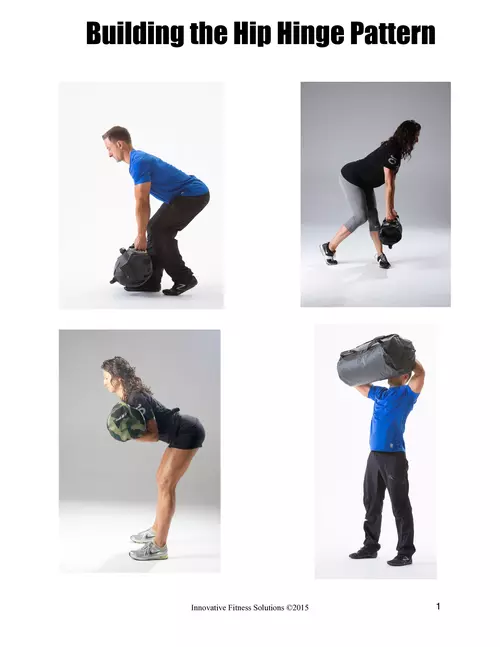
Building the Hip Hinge Pattern
After all most consider the deadlift as THE exercise in hip hinge motions. According to Strength Coach, Eric Cressey, ?using single-leg exercises with
adsPart of the document
Innovative Fitness Solutions ©20151Building the Hip Hinge Pattern
Beyond Deadlifting"People need to spend less time under the bar", HOLD ON put down the pitchforks and torches, these aren't my words! Before the lynch mob starts to head out, these are actually the words from one of the industry's most well respected researchers on spinal health, Dr. Stuart McGill.Yes, back at a fitness conference in Rhode Island, Dr. Stuart McGill uttered these words. The same man that is referenced and respected by just about every strength coach and serious strength athlete. But why? It sounds like this could be one of those "functional training" articles that we laugh as lifters of serious iron right?To be honest, I probably would have been one of those people rolling my eyes at such an idea about 10 years ago. This is especially true having been someone using heavy barbell lifts for a sport I fell in love with, Strongman. Yet, this same training experience taught me strong lessons that would forever open my eyes to the idea that such a statement could actually be true.In fact, it has quickly become one of my favorite question to ask coaches and lifters, "why do you deadlift?" After all most consider the deadlift as THE exercise in hip hinge motions. I have found that there are a bunch of interpretations, but is there any strength behind the arguments?Probably most important, I have also found debating the value of the deadlift is right up there with politics and religion. So, if you are open minded let's take a strong look if the deadlift is the right exercise for you!Reason #1: "Makes Me Strong"Strength, is right up there with one of the most vague statements and standards we set forth for ourselves. Heck, Dan John makes a great point that the job of a strength coach is to "get people strong." However, what that means can vary greatly and surprisingly needs to be relevant to the training goal.Many "gym athletes" have made the deadlift the measure of their strength. It is rather easy to do so because it is easy to measure. Yet, it depends upon how we define strength. For most it is simply the gage of how much weight they can lift. Therefore, "strength" becomes load oriented. That would appear to make sense but we have seen many athletes from wrestlers, gymnasts, martial artists, etc. that are very strong, but probably won't win any contests in the gym.The deadlift is a stable, predictable, and easy to groove movement, so is it really a good measure of our strength in sporting and most everyday activities? If we are to make a correlation of strength to "functional" activities we need to develop drills that more accurately challenge our bodies in these measures. These are my interpretations from McGill and others work. A more relevant measure of functional strength may have to include the following standards:Innovative Fitness Solutions ©20152


